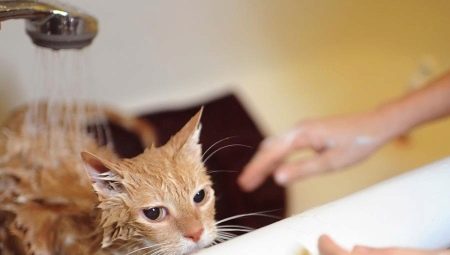Bathing a cat or a cat is a laborious procedure that requires a person not only dexterity and dexterity, but also patience and a friendly approach. The vast majority of baleen pets takes this procedure extremely negatively, so pet owners usually try not to abuse bathing. We will examine in the article how often cats, cats and kittens are allowed to be washed, whether there are contraindications to this procedure, and what veterinarians think about this.
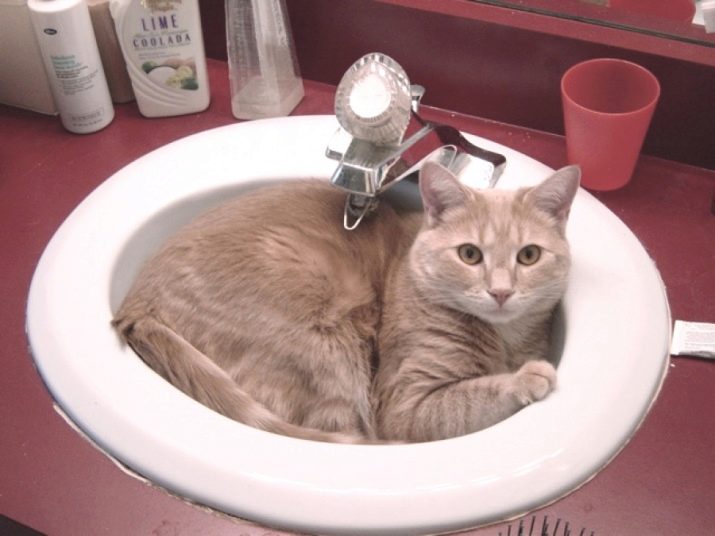
Indications
According to veterinary experts, the animal does not need to be washed without the need. Bathing for most cats and cats is a great stress, therefore resort to this procedure should only be necessary. However, there are reasons that can be considered objective indications for swimming.
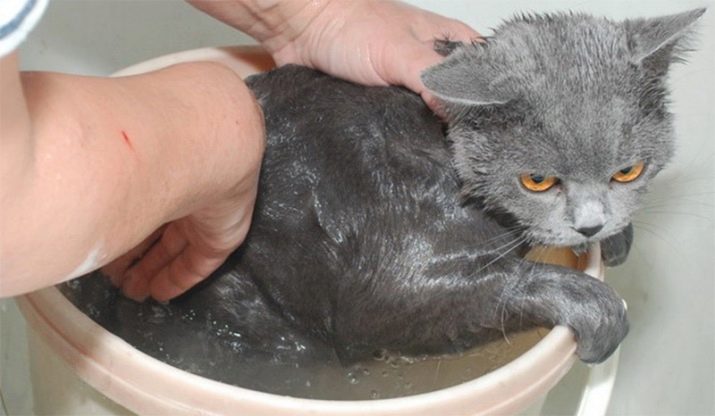
Kitten appearance
If a kitten appeared in the house taken from a well-groomed domestic cat, then most often it is not necessary to bathe it.
Animals brought up at home rarely suffer from parasites and skin diseases. In this case, it is enough just to carefully examine the baby, assess the cleanliness of his coat, ears, nose, axillary and inguinal folds.
Bathing is usually not required for small pets taken from the shelter. Employees of such organizations and volunteers, as a rule, give the new owners their wards already clean, tidy and combed.
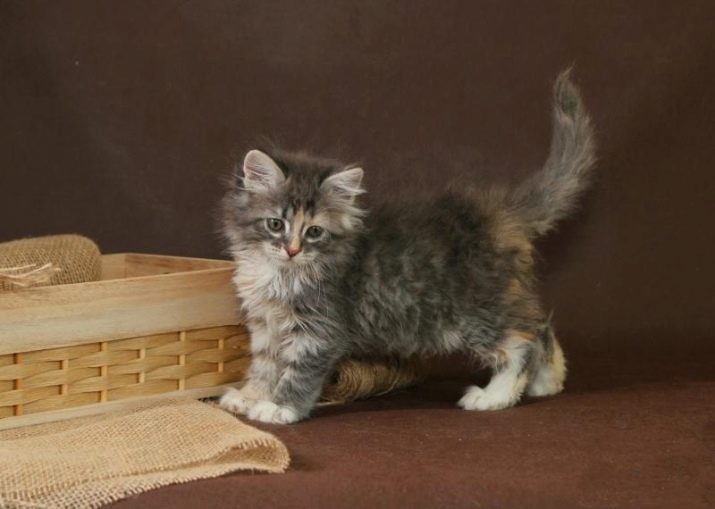
The situation is somewhat different when a kitten appears in the house, picked up on the street.In this case, the animal must be carefully examined, paying particular attention to the condition of the ears, eyes, nose, abdomen and inguinal region.
Wool should be inspected no less carefully by running fingers against it (gloves should be worn first). The presence of bald spots in the coat may indicate the development of lichen, and the presence of streaks and traces of pus in the nose and eyes - an infectious disease. After examining the pet, you must carefully bathe using a special antiparasitic shampoo.
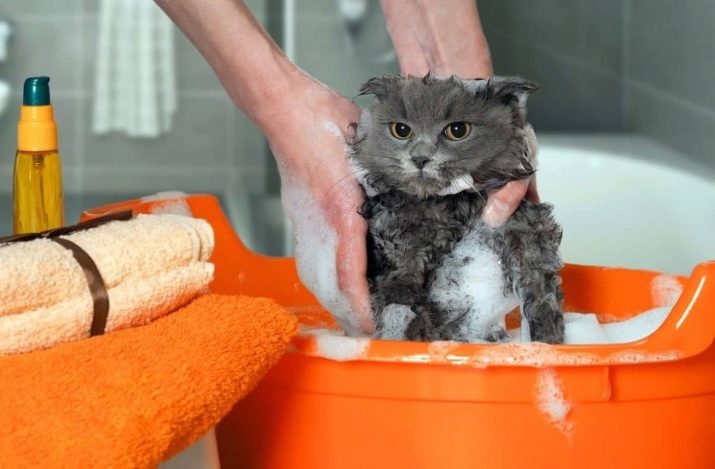
If the cat got dirty
Although cats and cats are considered clean animals, some of them are completely inconsistent with this stereotype. Some representatives of the cat family even manage to get dirty, being in a clean house, without even leaving its limits.
In some cats and cats, wool can quickly and often get dirty, falling into untidy wolves due to increased production of sebum. Often this phenomenon is observed in animals undergoing hormonal changes. In this case, pets also need swimming using a special zoo shampoo with anti-seborrheic effect.
An experienced veterinarian will help you choose an effective medical zoo shampoo.
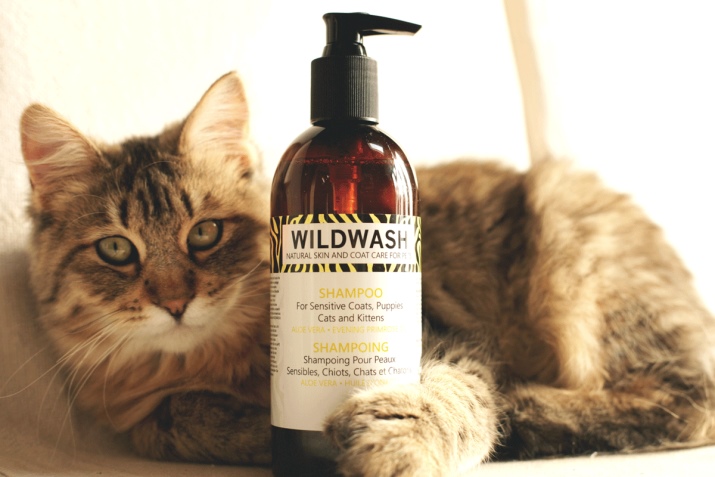
Molting
The period of intensive undercoat change is one of the main reasons requiring more frequent bathing. During molting, some of the dead hairs remain and become tangled in the wool, forming ugly tangles and lumps. The animal is not able to cope with them on its own.. Moreover, trying to put himself in order, a molting pet often chokes on its own hair. Swimming is also required here. with further thorough combing of the dead undercoat.
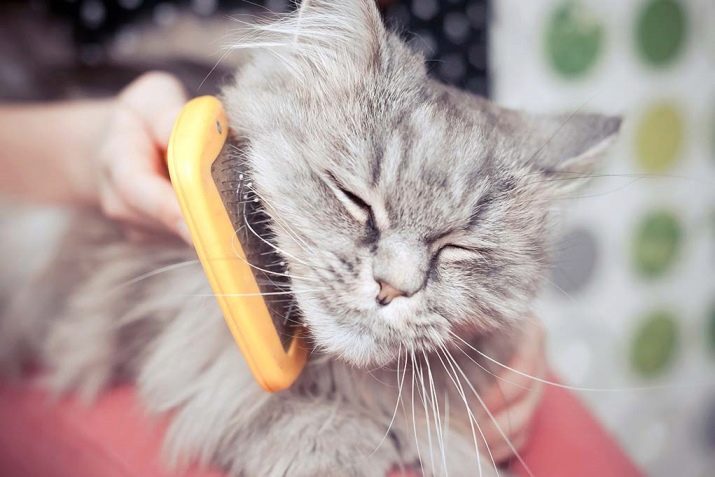
The presence of parasites and fleas
Detection of parasites and fleas in animal hair is the reason why a thorough bath should be carried out immediately. During the procedure, it is important to use a special zoo shampoo with an insecticidal effect. Such detergents contribute to the destruction of parasites and prevent their further appearance. In some cases, the procedure is repeated.
In case of severe lesions by blood-sucking insects, it is recommended to treat the animal’s hair with special drops or spray and leave it for 1-2 days (in accordance with the instructions). In this case, the animal is bathed after the processing period.
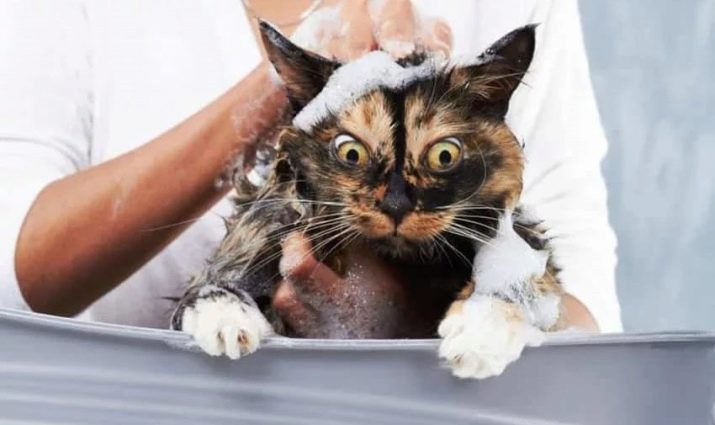
Preparation for the exhibition
Professional breeders of cats and cats are well aware of how much energy it takes to prepare for exhibition events. Before the exhibition, thoroughbred pets are washed using very expensive shampoos that add shine and volume to the coat. Additionally, the hair is combed and laid with professional gels and varnishes.
The above reasons are the main reasons for the next bathing of the pet. Owning cats and cats who prefer to wash their animals too often, veterinarians remind that this can threaten the development of skin diseases up to massive hair loss.
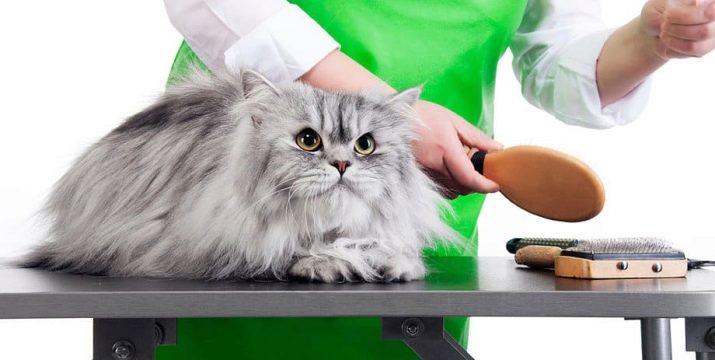
Are there any contraindications?
Often there are situations when bathing a cat or cat is strictly not allowed. The following circumstances are customarily referred to the list of such contraindications when:
- the pet has just or recently eaten (vomiting may open due to stress);
- the animal suffered severe stress, it is scared or aggressive;
- the pet underwent surgery (after surgery, cats do not bathe for at least two weeks);
- the animal is currently diagnosed with a disease.
With great care, you should bathe small kittens, pregnant and lactating cats, as well as elderly animals. In particular, this condition must be observed when the pet avoids and is very afraid of the bathing procedure.
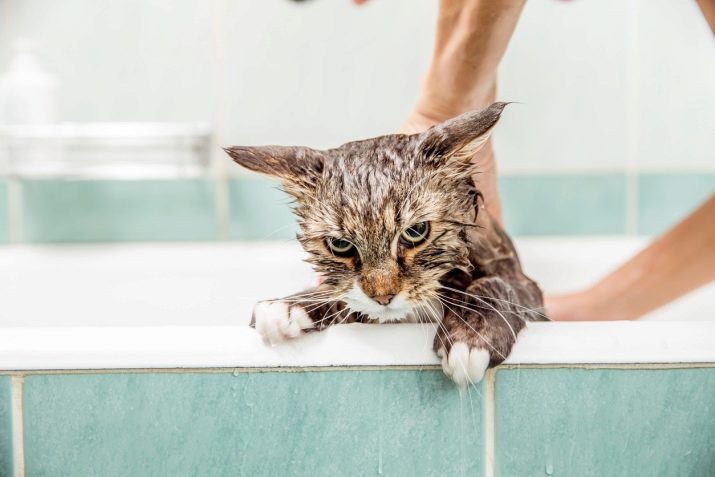
What factors determine the frequency of bathing?
The frequency and frequency of bathing cats and cats depend on a number of specific factors, under the influence of which some animals have to be washed more often than others. So, the frequency of this procedure may depend on the age of the pet, its breed and, consequently, the length of the coat, health status.
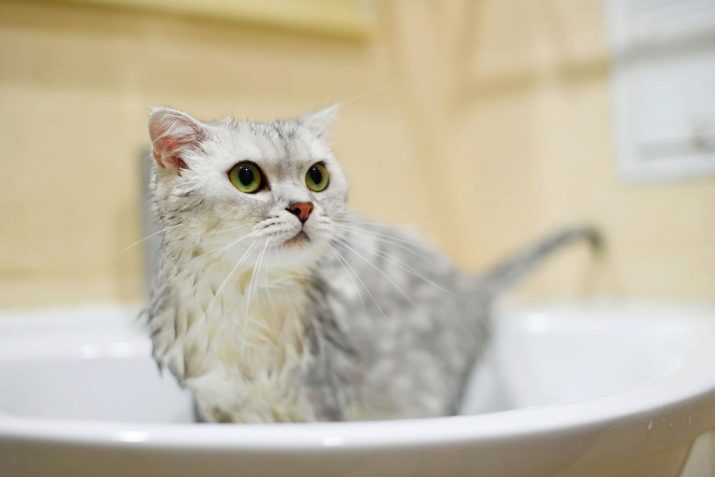
Age
Very small kittens are recommended by vets not to bathe in the first months of life. During this period, their mother is actively caring for them. For the first time, a baby is allowed to bathe after his baby teeth fall out. This usually occurs at 4 months of age.
Kittens whose age is younger than 3-4 months should not be bathed. At this age, the immunity of animals is still weak, which can cause the development of colds after water procedures. In addition, after bathing a kitten using detergents, a nursing cat may not recognize the baby’s smell and, therefore, will not let him in.
Adult animals with medium-length hair are bathed on average 2-3 times a year. Active individuals that quickly get dirty are washed a little more often. Older cats and cats, who prefer to spend a significant part of their time in solitude and peace, bathe about two times a year.
Adult non-castrated cats require more frequent bathing compared to their castrated counterparts. In males with preserved reproductive function, the sebaceous glands produce more secretion under the influence of hormones, as a result of which the hair gets dirty faster, acquires a greasy shine and sticks together.
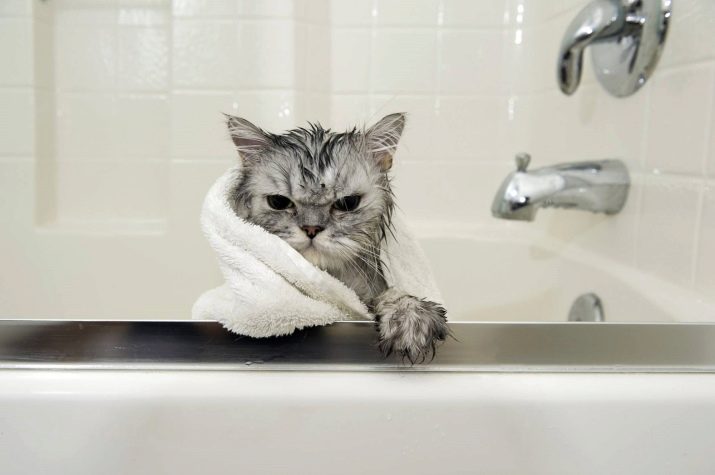
Breed
The frequency of bathing depends on the breed and the color of the animal. So, if ordinary cats with medium hair are bathed about three times a year, then long-haired individuals are allowed to be washed about once every 2 months. Shorthair cats rarely bathe. Representatives of the sphynx breed are completely wiped with a damp cloth if necessary, although many cats of this breed adore water procedures. Some owners of sphinxes who love to swim, arrange this procedure for their pets once a week.
Besides, Frequent bathing is required for cats of white, beige and peach color. They are allowed to bathe every 2-3 months with the use of special shampoo.
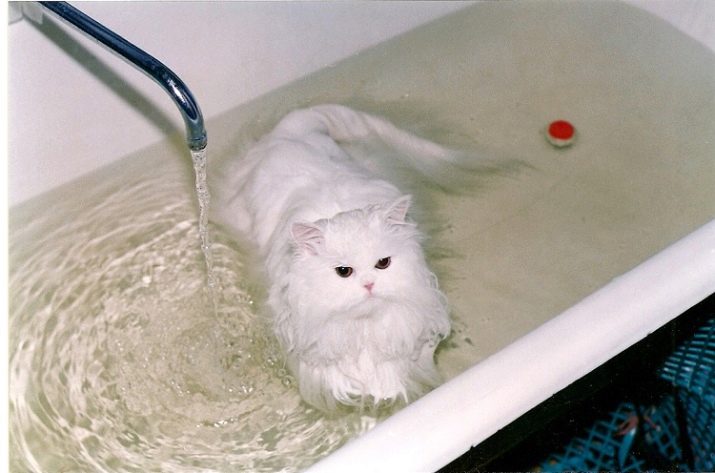
Disease
If a pet suffers from an allergy accompanied by skin itching, it is possible to relieve its condition by bathing. Usually this procedure is arranged once a week, using special mild shampoos with a calming effect. The frequency of bathing and the type of detergent should be recommended by the attending veterinarian.
Some internal diseases (for example, hormonal disorders) are often accompanied by increased production of sebum. As a result of this, the cat's hair begins to stray into lumps and hang over with untidy “icicles”. With excessive sebum secretion clogs the pores of the skin, because of which the animal can begin to itch strongly. In this case, you can also resort to the help of bathing using the means that regulate the sebaceous glands, without forgetting about the treatment of the underlying disease.
It is not allowed to bathe animals with infectious skin diseases in an acute form, with severe injuries of the skin. And also under the ban on swimming, pets suffering from catarrhal diseases or who have recently suffered them are excluded.
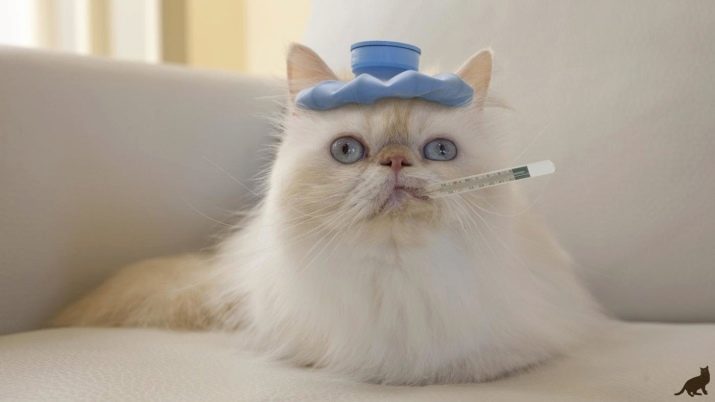
Place of residence
The frequency of washing a cat depends on its place of residence. If the pet spends most of the time on the street, it should be bathed quite often - about 4-5 times a year. Animals that are brought up at home and do not go outside are washed less often - about 2-3 times a year.
A domestic cat that avoids swimming does not need to be disturbed unnecessarily. Animals that do not leave the apartment are not only well protected from the risk of infection with parasites, but also from street dirt.
To determine that a pet needs bathing, it is possible in appearance. In dirty animals, the hair begins to stick together, glossy, and after contact with it, a feeling of a greasy film may remain on the hands.Another sign that the pet needs to bathe is the appearance of an unpleasant odor coming from the coat.
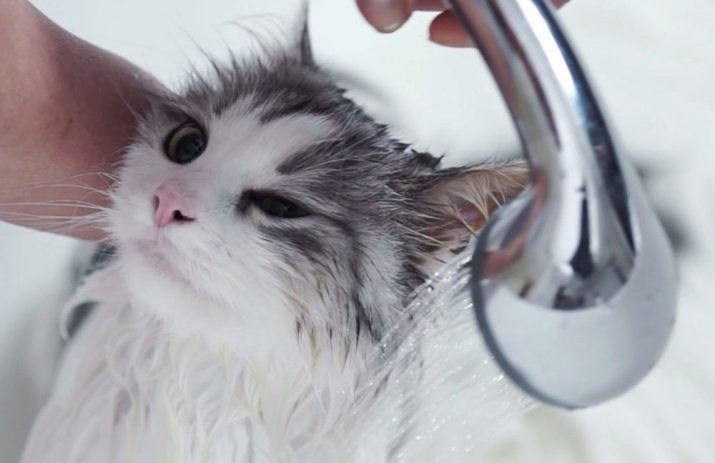
Pregnancy cat
Pregnant cats should be bathed only in case of emergency (for example, if parasites or fleas are detected). If the pregnancy proceeds normally, and the animal calmly tolerates bathing, it is allowed to wash it carefully.
It is undesirable to bathe future cats-moms shortly before birth. Frightened by water or sudden movements, the animal can cause serious harm to itself and future babies.
If the need to bathe a pregnant cat has become apparent, the procedure should be performed as carefully and accurately as possible. It is important to keep track of time, trying not to keep the animal in the bathroom for a single extra minute. During swimming, you need to communicate with the animal, talk to him extremely gently, avoiding shouts and a raised voice.
No less caution should be exercised when bathing nursing cats. If the procedure is not necessary, do not disturb the animal unnecessarily. Under the influence of a stressful situation, which is bathing, a lactating cat may lose milk.
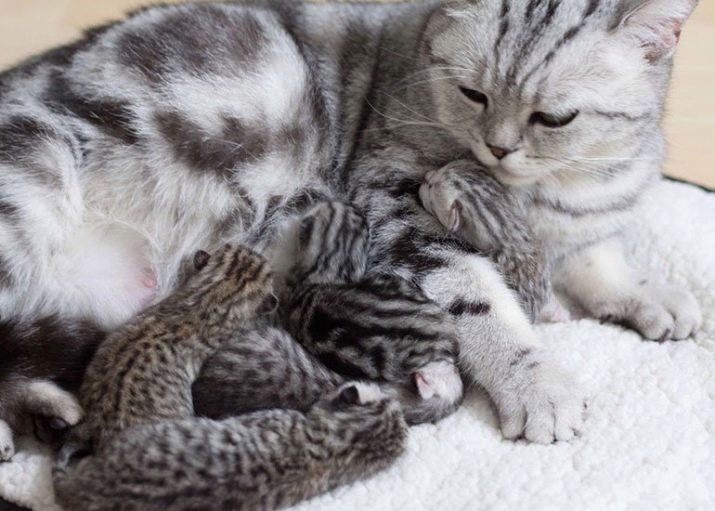
Veterinarian recommendations
Even if the pet belongs to the category of those animals that require frequent bathing, it is not recommended to carry out this procedure more than 6 times a year. In some cases, water procedures are best combined with dry baths, which use special powder shampoos.
It must be remembered that in the cold season, cats and cats are washed less often. If the apartment is cool, then do not rush with a bath. After water procedures, the animals freeze strongly, so in a cool room (especially if there are drafts), they can easily catch a cold. For this reason, after bathing a cat or cat must be placed in a warm room, where there is no draft.
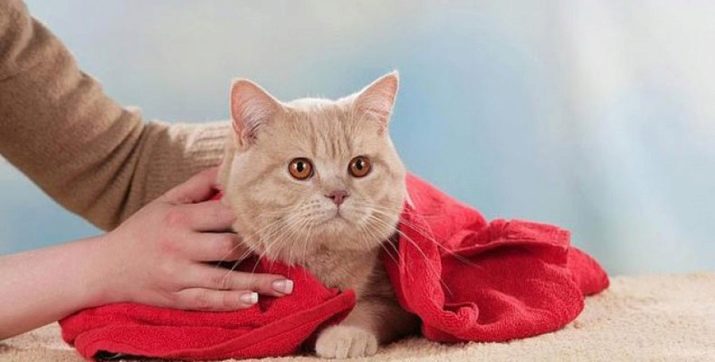
In very hot weather, some inexperienced cat breeders often try to bathe their pets or simply rinse them with water. According to veterinarians, this is not necessary. To alleviate the condition of the cat in the heat, you can use the following recommendations:
- place a wet towel or a clean rag moistened with water near the cat’s bed;
- little by little spray the animal with water from the sprayer, covering the face and ears with the palm of your hand;
- provide your pet with unhindered access to clean water;
- periodically wipe the cat with a damp cloth.
In an effort to help the pet withstand the heat with the least suffering, some owners use air conditioners and fans. Often these devices cause severe colds in cats and cats.
It is strictly forbidden to find the animal after bathing in a room with a working fan or air conditioning.
The frequency of bathing cats and cats is a conditional indicator, depending on the individual characteristics of the animals, their lifestyle, age, health and living conditions. These parameters are well known to caring and attentive owners, therefore, when determining the time when it is time to bathe their pets, they have no difficulties.
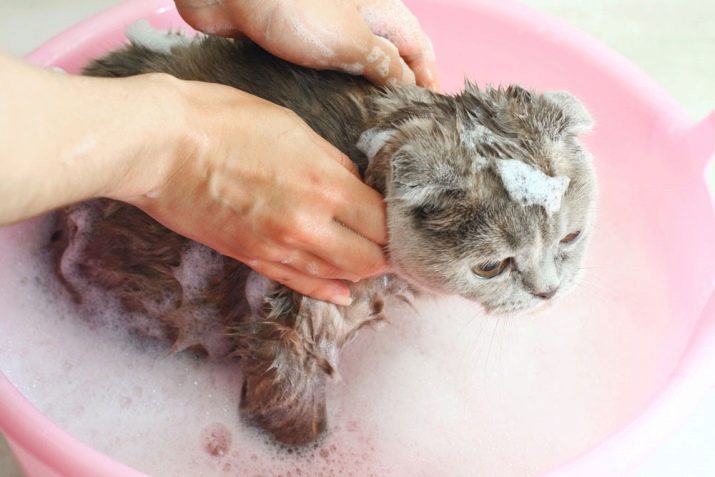
About whether to bathe a cat and how often to do it, see the next video.
